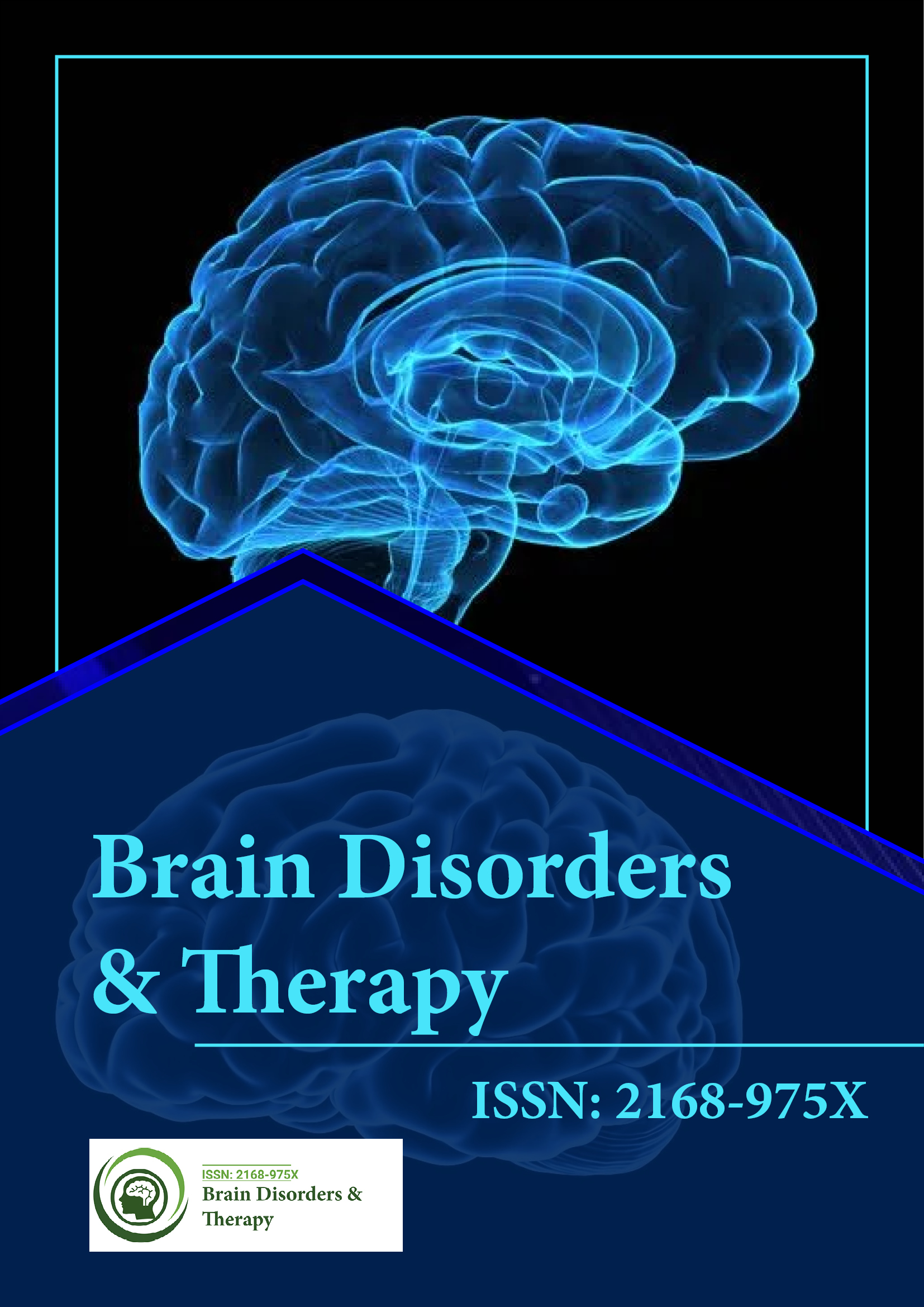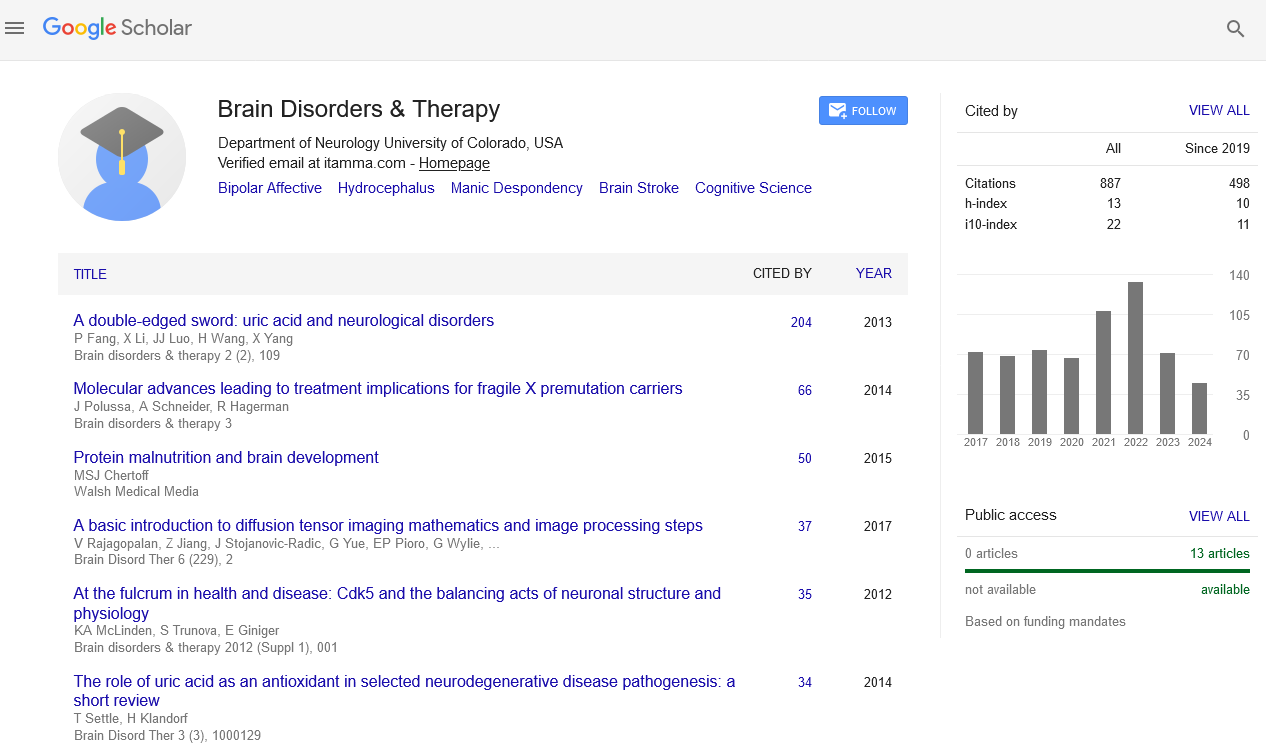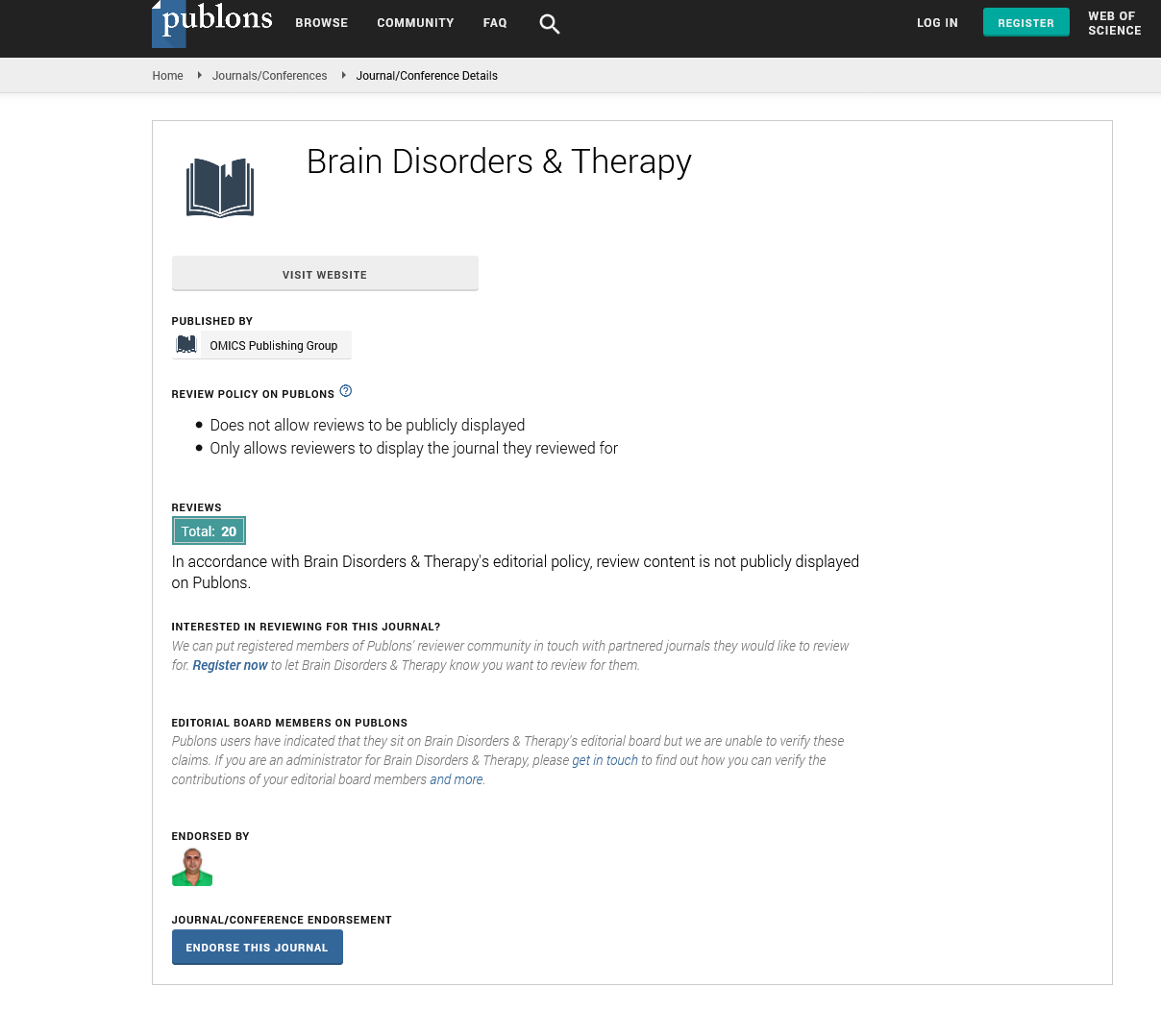Indexed In
- Open J Gate
- Genamics JournalSeek
- JournalTOCs
- RefSeek
- Hamdard University
- EBSCO A-Z
- OCLC- WorldCat
- Publons
- Geneva Foundation for Medical Education and Research
Useful Links
Share This Page
Journal Flyer

Open Access Journals
- Agri and Aquaculture
- Biochemistry
- Bioinformatics & Systems Biology
- Business & Management
- Chemistry
- Clinical Sciences
- Engineering
- Food & Nutrition
- General Science
- Genetics & Molecular Biology
- Immunology & Microbiology
- Medical Sciences
- Neuroscience & Psychology
- Nursing & Health Care
- Pharmaceutical Sciences
Disorders of glial neocortex homeostasis under reproduction of acute cerebrovascular pathology in rats
Global Summit on Stroke
August 03-05, 2015 Birmingham, UK
Makarenko O M1 and Kovtun A M2
Scientific Tracks Abstracts: Brain Disord Ther
Abstract:
Study was conducted on 30 male rats who were subjected to acute hemorrhagic stroke (HS) simulation. In 10 days with these
animals we modeled repeated intracerebral post-traumatic hematoma again. The quantitative and qualitative glial analysis
of the sensomotor cortex areas of the ipsilateral and contralateral (control) brain hemispheres was carried out: Glial Formula
(GF) (the quantitative (percentage) content of glial cells in relation to the total of gliocytes and neurons (GF=astrocytes
(A)+oligodendrocytes (O)+microgliocytes (M)); Glial Index Quantitative (GIQ) (a ratio of the sum of one type of gliocytes
to another: GIQ1=A/M, GIQ2=O/M, GIQ3=A/O. The glial analysis under primary acute HS in the ipsilateral hemisphere in
comparison with the contralateral one: GF: The number of astrocytes was less (by 34.18%), of oligodendrocytes was less (by
27.97%), of microgliocytes was bigger (by 27.11%) and of pyramidal neurons was less (by 52.13%). GIQ: Decrease of the GIQ1
(by 51.8%), decrease of the GIQ2 (by 18.3%), minor changes of the GIQ3 (by 5.08%). The glial analysis under repeated acute
HS in the ipsilateral hemisphere in comparison with the contralateral one: GF: The number of astrocytes was less (by 64.3%),
of oligodendrocytes was bigger (by 37.7%), of microgliocytes was bigger (by 45.75%) and pyramidal neurons were less (by
42.4%). GIQ: Decrease of the GIQ1 (by 79.71%), decrease of the GIQ2 (by 47.7%) anddecrease of the GIQ3 (by 82.4%).
Biography :
Makarenko O M has got his PhD degree at the Moscow Medical Stomatological Institute and MD degree from the Institute of Higher Nervous Activity in Moscow.
He carries out his Post-doctorate researches at the Institute of Higher Nervous Activity and T G Shevchenko National University of Kiev. He is a Professor of the
Psychology Department and the author of more than 100 articles in reputed journals and 4 monographs.


